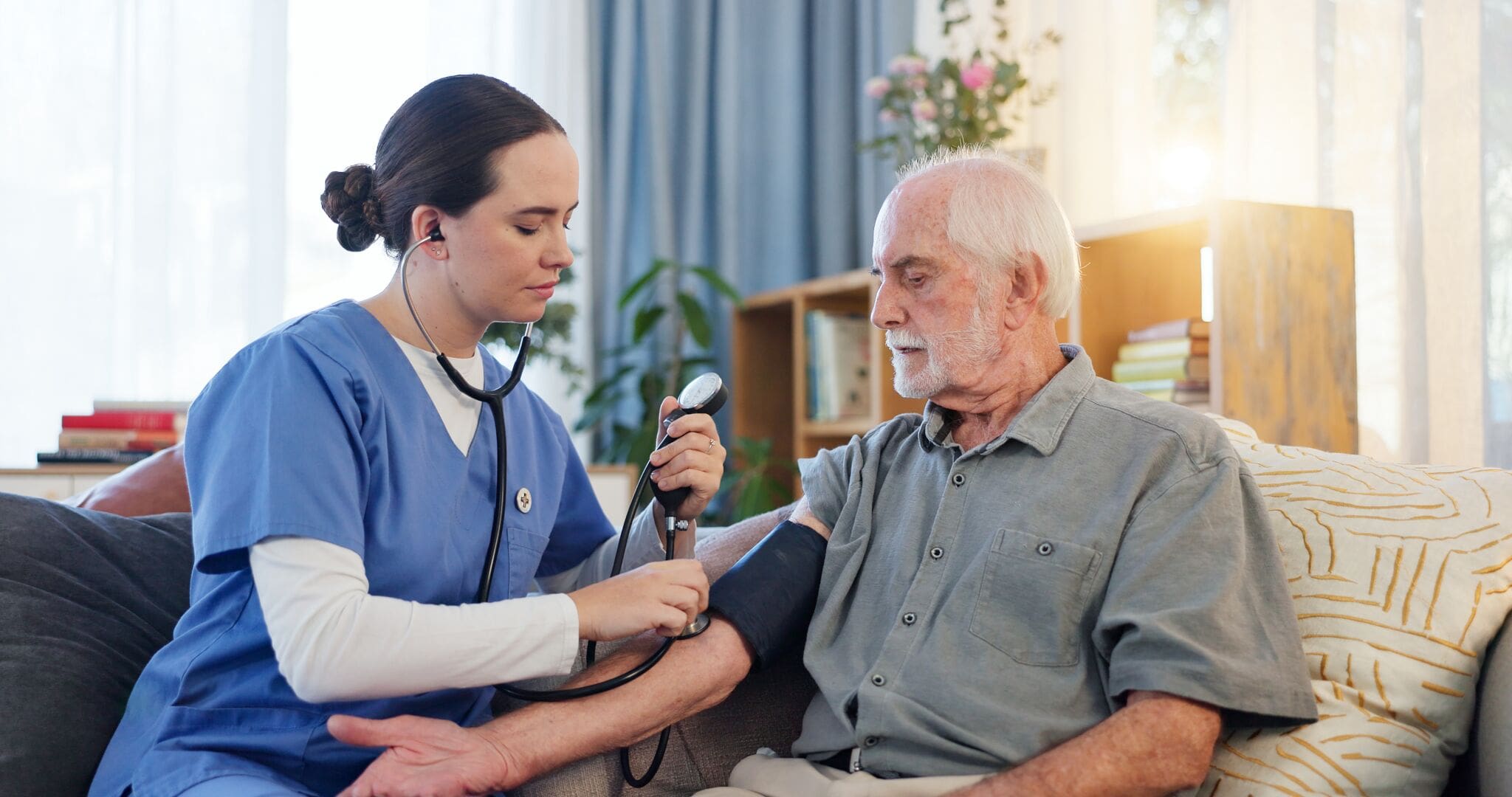In this article
Exact prevalence figures of HAVS vary, but estimates suggest that up to 300,000 workers in the UK are at risk of developing HAVS. The Health and Safety Executive (HSE) continues to report new cases annually, particularly in sectors with poor vibration control measures. While regulatory efforts have reduced numbers compared to past decades, HAVS is still a significant concern in workplaces where exposure limits are not strictly managed.
What is HAVS?
Hand-Arm Vibration Syndrome (HAVS) is a medical condition caused by prolonged exposure to vibration from handheld tools or machinery. It primarily affects workers in industries such as construction, manufacturing, forestry, and mining, where vibrating equipment like power drills, chainsaws, grinders, and jackhammers are commonly used. HAVS damages the blood vessels, nerves, and joints in the hands and arms, leading to a range of symptoms that can worsen over time if exposure continues.
HAVS is a progressive condition, meaning symptoms may start as mild but can become severe and debilitating if preventive measures are not taken. It is also irreversible, making early detection and intervention critical.
Employers have a legal responsibility to manage vibration exposure under the following regulations:
- Control of Vibration at Work Regulations 2005 (UK)
- Health and Safety at Work Act 1974
- EU Physical Agents (Vibration) Directive
People at risk of HAVS include those who work in industries involving heavy machinery or tools, including:
- Construction workers
- Builders
- Forestry workers
- Engineers
- Agricultural workers
- Mechanics
- Painters, especially those using vibrating spray guns or sanders.
- People who use vibrating power tools regularly, such as drills, grinders, saws, and other hand-held machinery that produces vibrations that can pose a risk.
- People who work with hand-held equipment for extended periods as long exposure to vibration from tools like chainsaws, pneumatic drills, or even jackhammers increases the risk of HAVS.
- People who have inadequate protective measures. Workers who don’t use PPE such as vibration-reducing gloves or who don’t follow safe working practices are more vulnerable.
To reduce the risk, it’s important for workers to take regular breaks, use vibration-reducing equipment, and follow safety guidelines in their workplaces.

What are the symptoms of HAVS?
The symptoms of HAVS can affect the blood vessels, nerves, and muscles of the hands and arms, leading to various health issues. The condition can progress over time, and early recognition of symptoms is essential to prevent further damage. Symptoms are typically divided into three stages:
Early Symptoms (Initial Phase)
At the early stage, the symptoms can be intermittent and may include:
- Numbness – the fingers or hands may feel numb or tingly, particularly after using vibrating tools. This sensation may be temporary but can become persistent with continued exposure.
- Reduced grip strength – the ability to grip objects may weaken, making it harder to hold tools or perform fine tasks.
- Pins and Needles (Paraesthesia) – a tingling or prickling feeling in the fingers is common, often occurring after using vibrating machinery.
- Cold sensitivity – hands and fingers may feel unusually cold, even in warmer environments. This is often exacerbated by exposure to cold temperatures, and the symptoms may occur more frequently during winter months.
Progressive Symptoms (Mid-Stage)
As the condition progresses, the symptoms can become more frequent and severe:
- White Finger (Vibration White Finger or VWF) – this is one of the most characteristic symptoms of HAVS, this occurs when the blood vessels in the fingers constrict, causing them to turn white. The fingers may appear pale or waxy and feel cold to the touch. This can lead to a feeling of numbness, pain, and difficulty with dexterity. The whiteness is typically most prominent in the tips of the fingers.
- Pain in fingers and hands – there may be discomfort or aching in the hands and fingers, particularly after exposure to vibration. The pain may become chronic and persistent.
- Loss of sensitivity – over time, HAVS can lead to reduced sensation in the fingers and hands. This can impair fine motor skills and reduce the ability to detect temperature or pressure changes.
- Sweating or clamminess – in some cases, excessive sweating or clamminess in the hands can occur, which may be a response to reduced blood flow or nerve damage.
Severe Symptoms (Advanced Stage)
If left untreated or if exposure to vibration continues, HAVS can lead to long-term damage with more severe and permanent symptoms:
- Permanent white finger – the fingers may remain pale or discoloured, even when not exposed to vibration or cold. This is a sign of permanent damage to the blood vessels and poor circulation.
- Muscle weakness – prolonged nerve damage can result in weakness in the muscles of the hand and forearm, affecting the ability to perform tasks that require strength or dexterity.
- Permanent numbness – the sensation in the fingers may become permanently impaired, making it difficult to feel objects or even differentiate between different textures.
- Reduced dexterity – the ability to perform precise or coordinated movements with the hands can decline, making simple tasks like fastening buttons or using small tools difficult.
- Raynaud’s phenomenon – this is when the blood vessels in the fingers constrict excessively in response to cold or stress, leading to the fingers turning white or blue. This is a more severe version of the cold sensitivity mentioned earlier and can result in permanent damage to the circulatory system in the hands.
- Permanent circulatory damage – the blood vessels in the fingers may be permanently constricted, leading to chronic pain, coldness, and further damage to the skin and nerves.
Additional symptoms include:
- Reduced quality of life – the progression of HAVS can result in significant impairment of daily life activities, such as difficulty holding and using tools, performing manual tasks, or even handling everyday objects.
- Emotional and psychological effects – persistent symptoms and the impact on daily activities may lead to emotional distress, frustration, anxiety, or depression, particularly as the individual realises the condition’s long-term nature.

What can cause HAVS?
Hand-Arm Vibration Syndrome (HAVS) is caused by regular and frequent exposure to hand-arm vibration, typically from using vibrating tools and machinery. It damages blood vessels, nerves, and joints in the hands and arms. Over time, this can result in reduced blood flow, tingling, numbness, and, in severe cases, the inability to use the hands properly.
Factors that can cause HAVS include:
- Prolonged exposure to vibrating tools – continuous or repetitive use of hand-held power tools is the main cause.
- High vibration levels – the intensity of the vibration from the tool is a key factor. The higher the vibration levels, the quicker the potential for damage.
- Duration of use – prolonged exposure, especially without adequate breaks, can increase the risk of HAVS.
- Incorrect use or poor maintenance of tools – tools that are not properly maintained or used in a way that increases vibration exposure can heighten the risk.
- Cold environments – exposure to cold temperatures can restrict blood flow and make the hands more susceptible to vibration-related damage.
- Repetitive use – frequent use of vibrating tools, even for shorter periods, can still accumulate damage over time.
- Individual factors – people with certain medical conditions or poor circulation may be more vulnerable to HAVS.
Typical tools that can cause HAVS include:
- Pneumatic tools such as drills, hammers, and wrenches.
- Power tools, including angle grinders, sanders, and jigsaws.
- Chainsaws, particularly those used in forestry or construction work.
- Impact wrenches and screwdrivers, often used in mechanical work or construction.
- Vibrating hand tools, such as floor polishers, concrete breakers, and demolition tools.
- Electric drills and hammer drills.
HAVS can be prevented with proper control measures and workplace practices. Prevention focuses on reducing exposure to hand-arm vibration from tools and machinery. Prevention methods include:
- Risk assessment & monitoring – conduct regular vibration risk assessments in the workplace, identify tools and equipment with high vibration levels and use a HAV monitoring system to track exposure over time.
- Tool & equipment management – choose low-vibration tools where possible, maintain and service tools regularly to keep them in good condition and use anti-vibration handles, gloves, or damping materials to reduce impact.
- Work practices & training – train workers on safe handling techniques to minimise grip force, encourage job rotation to reduce prolonged exposure and implement regular breaks to allow hands and arms to recover.
- Personal protective measures – provide anti-vibration gloves, though they should not be the primary control measure, ensure workers wear warm gloves and keep hands warm, as cold increases the risk of HAVS.
- Compliance with legal limits – adherence to the Control of Vibration at Work Regulations 2005 is important, which set limits on daily vibration exposure, use of the Exposure Action Value (EAV) and Exposure Limit Value (ELV) is important to manage risk.
By implementing these measures, HAVS can be effectively prevented, protecting workers from long-term damage.
Treatment of HAVS symptoms
There is no cure for HAVS. Once nerve and blood vessel damage has occurred, it is permanent. However, if caught early, the progression can be stopped or slowed by reducing or eliminating exposure to vibration. HAVS does not suddenly develop, it worsens over years. By the time symptoms appear, the damage is already done, making reversal impossible. Current medical science has no effective way to regenerate peripheral nerves or fully restore damaged blood vessels. Research is ongoing, but no cure exists yet.
The treatment for HAVS focuses on managing symptoms, preventing further damage, and improving quality of life. While there is no cure for HAVS, early intervention and lifestyle changes can help slow its progression and alleviate discomfort. Treatment options for HAVS symptoms includes:
- Reducing exposure to vibration – the most effective way to manage HAVS is to stop or significantly reduce exposure to vibrating tools and machinery.
- Workplace adjustments – employers should provide low-vibration tools, ensure proper maintenance of equipment, and rotate tasks to limit continuous exposure.
- Breaks – taking regular breaks from using vibrating tools can help reduce the risk of symptom progression.
- Medications – medications may be prescribed to manage specific symptoms of HAVS, particularly vascular and neurological issues. Vasodilators help improve blood flow to the hands and fingers, reducing the severity of Raynaud’s phenomenon (white finger). Over-the-counter painkillers like ibuprofen or paracetamol can help manage pain and discomfort. Calcium channel blockers may be prescribed to relax blood vessels and improve circulation in severe cases of Raynaud’s phenomenon.
- Physical therapy – exercises to improve grip strength, dexterity, and flexibility in the hands and arms can help manage musculoskeletal symptoms.
- Occupational therapy – therapists can recommend adaptive techniques and tools to make daily tasks easier for those with reduced hand function.
- Lifestyle changes – making certain lifestyle adjustments can help manage symptoms and improve overall well-being.
- Keep hands warm – wearing gloves and avoiding cold environments can reduce the frequency and severity of Raynaud’s attacks.
- Stopping smoking – smoking constricts blood vessels and worsens symptoms, so stopping is highly recommended.
- Having a healthy diet – a balanced diet rich in vitamins and minerals can improve circulation and overall health.
- Stress management – stress can exacerbate symptoms, so relaxation techniques like yoga or meditation may help.
- Anti-vibration gloves – these gloves can reduce the transmission of vibration to the hands, though their effectiveness varies.
- Ergonomic tools – using tools designed to minimise vibration and reduce strain on the hands can help prevent further damage.
- Surgery – in rare and severe cases of HAVS, surgery may be considered. Sympathectomy is a surgical procedure to cut the nerves that cause blood vessels to constrict, improving blood flow to the hands. Nerve decompression is a surgery to relieve pressure on damaged nerves, which may help to reduce pain and improve function.
- Psychological support – living with HAVS can be challenging, especially if it affects a person’s ability to work or perform daily tasks. Psychological support, such as counselling or therapy, can help individuals cope with the emotional impact of the condition.
- Regular health monitoring – workers at risk of HAVS should undergo regular health checks to monitor symptoms and detect any progression early. Regular visits to a healthcare provider can help track the condition and adjust treatment as needed.
The sooner HAVS is diagnosed and treated, the better the chances of managing symptoms effectively. Prevention is key, reducing exposure to vibration and using protective measures are the best ways to prevent HAVS from worsening. While symptoms can be managed, HAVS is irreversible, so prevention and early treatment are critical.
If you experience symptoms of HAVS, such as numbness, tingling, or white fingers, seek medical advice immediately. Inform your employer so they can take steps to reduce your exposure to vibration and comply with workplace safety regulations. By combining medical treatment, lifestyle changes, and workplace adjustments, individuals with HAVS can manage their symptoms and maintain a better quality of life.

Laws around equipment usage to avoid HAVS
In the UK, the Control of Vibration at Work Regulations 2005 is the primary legislation designed to protect workers from the risks of HAVS and Whole-Body Vibration (WBV). These regulations place specific responsibilities on employers to minimise vibration exposure and ensure worker safety.
The key requirements of the Control of Vibration at Work Regulations 2005 are:
- Risk assessment – employers must conduct a risk assessment to identify tasks and equipment that expose workers to harmful levels of vibration. The assessment should evaluate, the level of vibration from tools and machinery, the duration and frequency of exposure and the potential health risks to workers.
- Exposure limits – the regulations set exposure limit values (ELVs) and exposure action values (EAVs) for hand-arm vibration and employers must ensure that workers’ exposure to vibration does not exceed these limits.
- Control measures – employers are required to implement measures to reduce vibration exposure, including using low-vibration tools and machinery, maintaining equipment to ensure it operates with minimal vibration and providing anti-vibration gloves and other protective gear, rotating tasks to limit the time workers spend using vibrating tools and designing work processes to minimize the need for vibrating equipment.
- Information and training – employers must provide workers with information and training on the risks of HAVS and how to recognise symptoms, safe working practices to reduce vibration exposure, proper use and maintenance of tools and equipment and the importance of reporting symptoms early.
- Health surveillance – employers must provide health surveillance for workers who are regularly exposed to vibration levels above the EAV. Health surveillance includes regular health checks to detect early signs of HAVS, keeping records of workers’ exposure and health assessments, taking action if symptoms are detected, such as reducing exposure or redeploying affected workers.
- Monitoring and reviews – employers must regularly monitor and review their risk assessments and control measures to ensure they remain effective. Any changes in equipment, work processes, or exposure levels should prompt a reassessment.
Under the regulations, employers have a legal duty to:
- Identify tasks and equipment that pose a risk of HAVS.
- Take steps to reduce vibration exposure to as low a level as reasonably practicable.
- Provide training, information, and health surveillance to workers.
- Keep records of risk assessments, exposure levels, and health checks.
Workers also have a role to play in preventing HAVS, including:
- Following safe working practices and use equipment correctly.
- Attend health surveillance appointments and report any symptoms of HAVS.
- Use protective gear provided by the employer.
- Inform their employer if they notice any issues with tools or equipment.
The Health and Safety Executive (HSE) enforces the Control of Vibration at Work Regulations. Failure to comply with the regulations can result in:
- Improvement notices – requiring employers to address specific issues.
- Prohibition notices – stopping work activities that pose a serious risk.
- Fines and prosecution – for serious breaches of the regulations.
If you have been diagnosed with HAVS due to exposure to vibration at work, you may be entitled to compensation. This could come from one or more of the following sources:
- Industrial Injuries Disablement Benefit (IIDB) – if you developed HAVS due to your work, you may be eligible for IIDB, a government benefit for certain industrial diseases. The amount depends on the severity of your condition and is assessed by a medical examiner. You can apply through the Department for Work and Pensions (DWP).
- Employer’s Liability Claim (Personal Injury) – if your employer failed to protect you from excessive vibration exposure, you may be able to claim compensation through a personal injury claim. You would need to prove negligence, such as lack of protective equipment or failure to monitor vibration exposure. Claims generally need to be made within three years of diagnosis.
- Compensation through a Union – if you are a union member, your union may help you pursue a claim against your employer.
- No-Win, No-Fee Solicitors – many solicitors specialise in workplace injury claims and offer a no-win, no-fee service.






